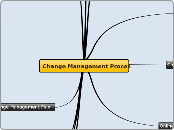Value creation
Factors influencing
Function management
Internal factors
Outputs
Organizational chart
Organizational structure
Organic
Mechanistic
Design options
Contemporary
Telecommuting
Virtual Organization
Boundaryless organization
Team structures
Project structures
Matrix structures
Traditional
Divisional structure 事业部制(类似于子公司形式,自负盈亏,注意与Functional区分)
Customer
Product
Geographical
Functional structure
Simple structure
6 elements in organizational structure
Formalization
Centralization & Decetralization
Span of control
减少不必要的管理层,由tall organization 到 flat organization 的转变,提高信息传递效率。
Chain of command
Unit of command (Multi boss dilemma多老板困境)
Responsibility
Authority (提供方向和建议)
Line Authority(中层管理者,命令,直接指挥,授权)
Staff Authority(助理或副手,协助作用)
Departmentalization
Work specialization
Goal setting
Contingency factors
Length of future commitments
Environment uncertainty
Organizational level
goal-setting techniques
Characteristics of well-written goals
SMART 原则(该原则用于衡量一个目标)
Realistic
Attainable
Measurable
Steps in goal setting
Goal setting approaches
Management by objectives (Mutually agreed-upon goals)
Traditional goal-setting (Top-down)
Goals and plans
Type of plans
Frequency of use plans
Standing
Single use
Specificity plans
Specific
Directional
Time Frame plans
Short
Long
Breadth plans
Operational
Strategic
Type of goals
Stated goals
Strategic goals
Finanicial goals
Planning of foundation
Needs(针对于manager improtance的额外内容)
Minimizes wastes and redundancy 减少冗余
Establishes goals/standards for controlling (对于中层管理者而言具有一定程度的监管作用)
Importance
Planning reduce uncertainty
Planning provides direction
Conception
Formal and written plans (documents that outline how goals will be met)
Applying different goal setting approaches
Establishing strategies for achieving
Setting goals
External factors
Environmental
Legal
Technological
Soci-culture
Economic
Political
How to create value?
Management
Change management
Internal Change management
External Change management
Changing demands
Human resources management
Controlling/retain competent and high-performing employees
Career development
Compensation and benefits
Performance management
Provide employees with up-to-date skills and knowledge
Training
Orientation
People-oriented management
Identify and select competent employees
Selection
Recruitment
Human resource planning
Socially-conscious management
Ethics
Green management
Classical view vs. socioeconomic view
Value-driven management
Something about the managers
Skills
Technical skills
Conceptual skills
Human or interpersonal skills
Managerial roles
Interpersonal roles
Informational roles
Decisional roles
Managers
Primary management functions
Controlling
Leading
Organizing
Planning
What they do
Who and Why
The evolution of management approaches
Creativity & Innovation
Innovation types
Sustaining innovation
Disruptive innovation
The difference between Creativity & Innovation
Workplace diversity
Challenged in diversity managements
Discrimination,歧视,是一种行为
Stereotyping, 刻板印象,也是想法
Prejudice, 对于别人先入为主的看法,想法
Bias, 对思想和意识形态的偏好,想法
Type of diversity
Deep-level diversity
Surface-level diversity
Conception and understanding
What's value
Profit
The process of value creation









